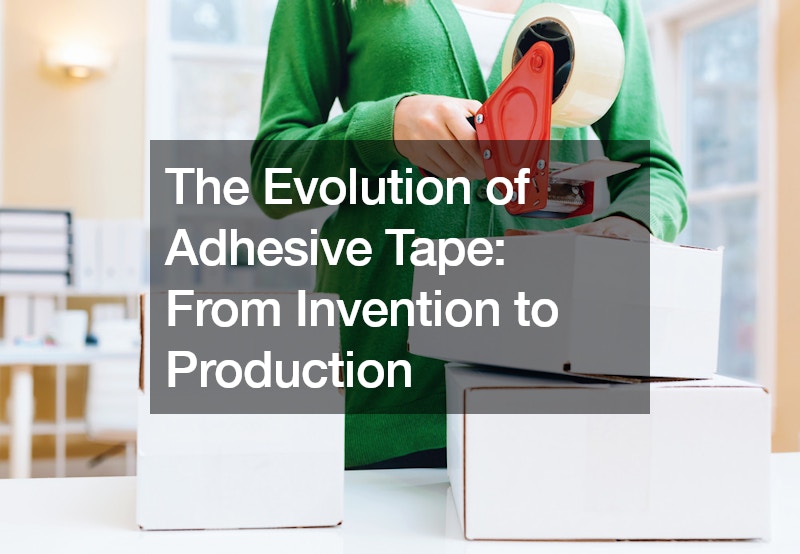
Adhesive tape has become a ubiquitous item in our daily lives, used for everything from sealing packages to hanging decorations. However, its origins are rooted in the early 20th century when it was first invented as a painter’s masking tape for auto body shops in 1925. Since then, adhesive tape has undergone very significant evolution, leading to the development of various types for different purposes.
One of the key milestones in the evolution of adhesive tape was the introduction of transparent tape that was designed to seal cellophane wrap by the food industry. This innovation opened up new possibilities for the use of tape as a household item, and the idea quickly caught on.
Today, adhesive tape is available in a wide range of types and sizes, each designed for specific applications.
The production of adhesive tape involves several steps, starting with the manufacturing of rolls of plastic film called polypropylene. These rolls are then fed into a machine called the “Unwinder,” where workers position a strip of adhesive splicing tape along the end of each roll. This enables them to connect one roll after another, creating an uninterrupted feed to the extensive production line. The rolls are then unwound completely, and the end of each roll sticks to the beginning of the next, ensuring a seamless and continuous process.
To transform the plastic film into tape, one side is coated with a hot adhesive known as “hot melt.” This adhesive is made from several ingredients, including synthetic rubber for flexibility, a UV protector to prevent drying and discoloring, an antioxidant to prevent aging, synthetic resin for stickiness, and pigmentation oil for color. The “hot melt” is loaded into a preheated holding tank and maintained at 200 degrees Celsius to keep it from hardening. It is then pumped through to a machine called the “Gluer,” where the excess is wiped away, and the film is rolled to apply the adhesive.
A cooling roller is used to harden the adhesive, and a computerized sensor ensures an even coat. If the coat is not even, the sensor automatically signals the pump to adjust the output. The tape is then rolled onto spools by a machine called the “Rewinder.” When a spool fills, a knife separates the tape at the splice point, and winding begins on the next spool. Each spool of tape is then divided into several strips by sharp razor blades called slitters. The strips are wound onto cardboard cores, and the ends are sealed with a tab.
The length of tape per roll varies according to customer specifications, and the finished tape rolls undergo a quality control check before shipping. This involves testing a sample roll of each spool, such as unwinding the tape sticky side up and releasing a tiny stainless steel ball down an incline to measure how far it rolls before sticking and coming to a stop. The stopping distance must adhere within a certain distance to pass the test.
For businesses looking to purchase adhesive tape for their operations, finding reliable adhesive tape suppliers is crucial. These suppliers offer a wide range of adhesive tapes, including packing tape, masking tape, and double-sided tape, to meet various needs. Adhesive tape suppliers often provide custom solutions, such as custom sizes and colors, to meet specific requirements. Additionally, they offer competitive pricing and bulk discounts, making them a cost-effective option for businesses.
In conclusion, adhesive tape has come a long way since its invention in 1925. Today, it is a versatile and essential item used in various industries and applications. Understanding the manufacturing process of adhesive tape and finding reliable suppliers are key steps in ensuring that you have the right tape for your needs. Whether you’re sealing packages or hanging decorations, adhesive tape continues to play a vital role in our daily lives.
Furthermore, the continuous innovation in adhesive tape manufacturing has led to the development of specialized tapes for specific industries and applications. For example, there are tapes designed for high-temperature environments, extreme weather conditions, and even tapes that leave no residue when removed. This level of customization and versatility has made adhesive tape a go-to solution for a wide range of tasks. As technology continues to advance, we can expect further improvements in adhesive tape manufacturing, leading to even more innovative and effective products. So, the next time you reach for a roll of adhesive tape, remember the journey it has taken from its humble beginnings to its current status as an indispensable tool in our lives.
.





